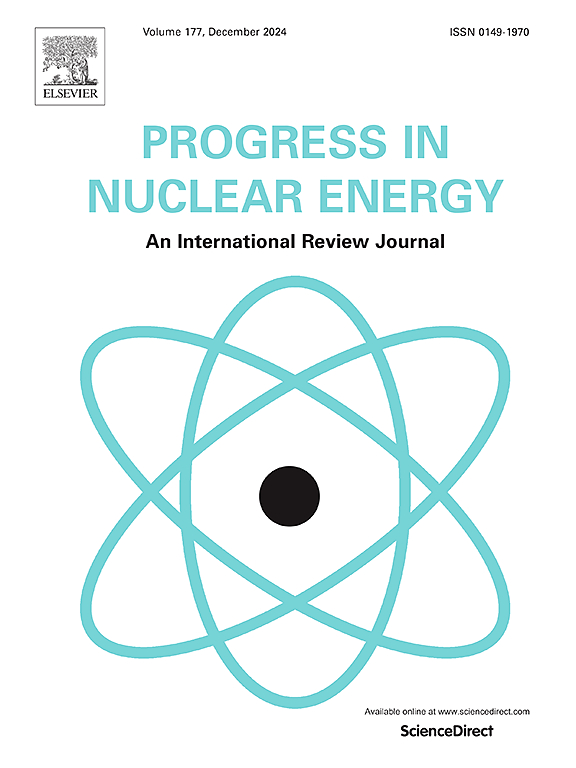Mechanisms of crystalline swelling in bentonite buffer materials: Insights from molecular dynamics
IF 3.3
3区 工程技术
Q1 NUCLEAR SCIENCE & TECHNOLOGY
引用次数: 0
Abstract
Compacted bentonite has been extensively studied due to its critical role in high-level radioactive waste (HLRW) disposal. Understanding the mechanism of crystalline swelling at the molecular level is essential for optimizing bentonite as a buffer material. To investigate the interplay between interlayer molecular conformation, migration, and interactions, molecular models of Na-montmorillonite (Na-Mt) were developed, and hydration behavior was examined through molecular dynamics (MD) simulations. The findings reveal that interlayer water molecules form distinct layers influenced by cation solvation and hydrogen bonding, with hydration layer conformations closely correlated to basal spacings. Na+ ions transition from inner-sphere to outer-sphere complexes due to hydration shell formation. The diffusion of Na+ ions is restricted by interlayer blocking and adsorption on clay surfaces. Under extreme drying conditions, strong attractions between Na+ ions and clay sheets result in interlayer collapse, with interlayer repulsion primarily driven by Coulomb electrostatic forces between adjacent clay sheets. Subsequently, the influx of water molecules acts as the driving force for crystalline swelling. Finally, the relationship between the hydration behavior of bentonite and montmorillonite was analyzed, providing valuable insights into the mineralogical mechanisms underlying Na-Mt swelling. These results contribute to a deeper understanding of bentonite's performance as a buffer material in HLRW repositories.
求助全文
约1分钟内获得全文
求助全文
来源期刊

Progress in Nuclear Energy
工程技术-核科学技术
CiteScore
5.30
自引率
14.80%
发文量
331
审稿时长
3.5 months
期刊介绍:
Progress in Nuclear Energy is an international review journal covering all aspects of nuclear science and engineering. In keeping with the maturity of nuclear power, articles on safety, siting and environmental problems are encouraged, as are those associated with economics and fuel management. However, basic physics and engineering will remain an important aspect of the editorial policy. Articles published are either of a review nature or present new material in more depth. They are aimed at researchers and technically-oriented managers working in the nuclear energy field.
Please note the following:
1) PNE seeks high quality research papers which are medium to long in length. Short research papers should be submitted to the journal Annals in Nuclear Energy.
2) PNE reserves the right to reject papers which are based solely on routine application of computer codes used to produce reactor designs or explain existing reactor phenomena. Such papers, although worthy, are best left as laboratory reports whereas Progress in Nuclear Energy seeks papers of originality, which are archival in nature, in the fields of mathematical and experimental nuclear technology, including fission, fusion (blanket physics, radiation damage), safety, materials aspects, economics, etc.
3) Review papers, which may occasionally be invited, are particularly sought by the journal in these fields.
 求助内容:
求助内容: 应助结果提醒方式:
应助结果提醒方式:


